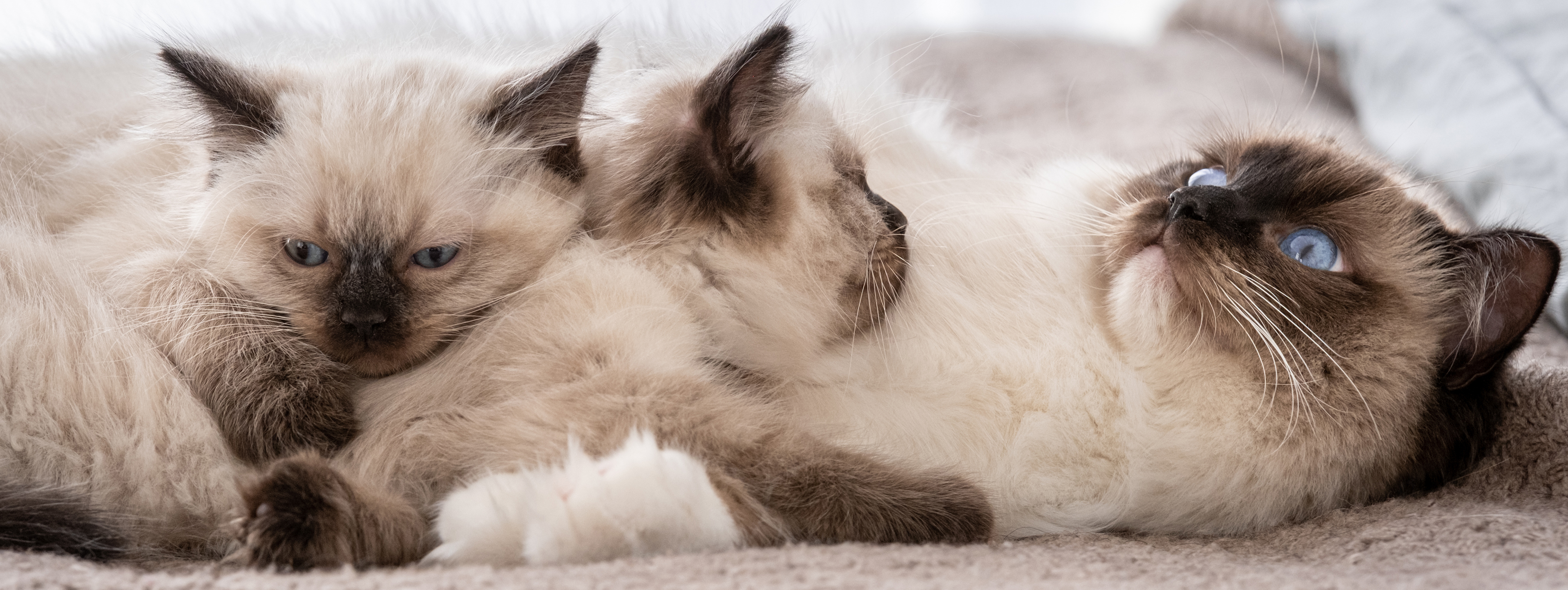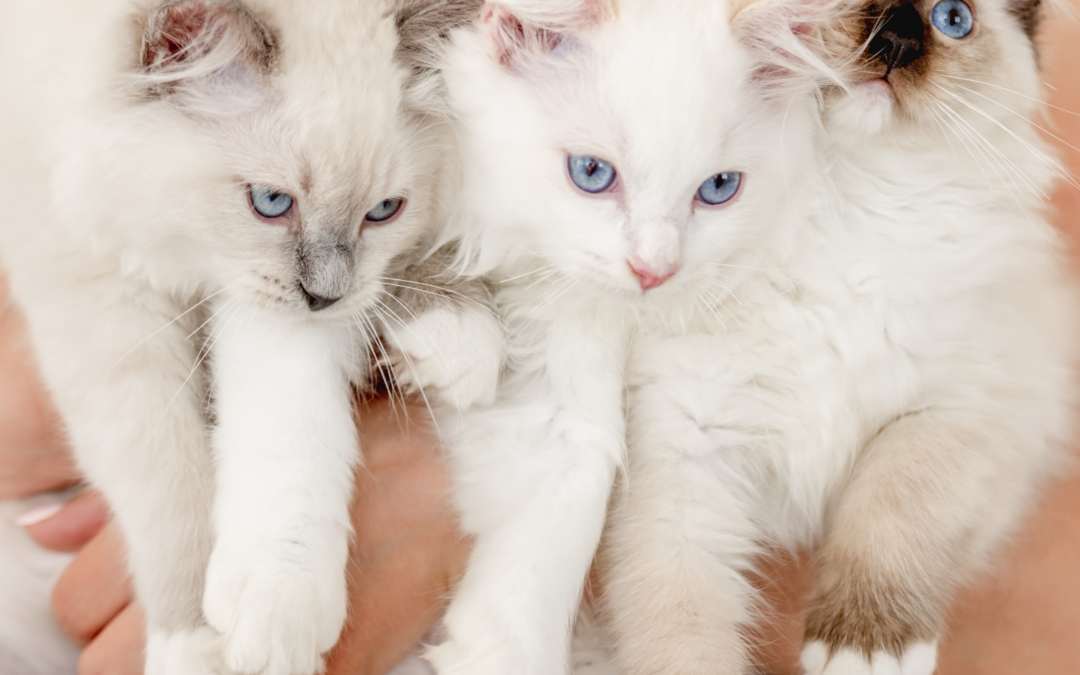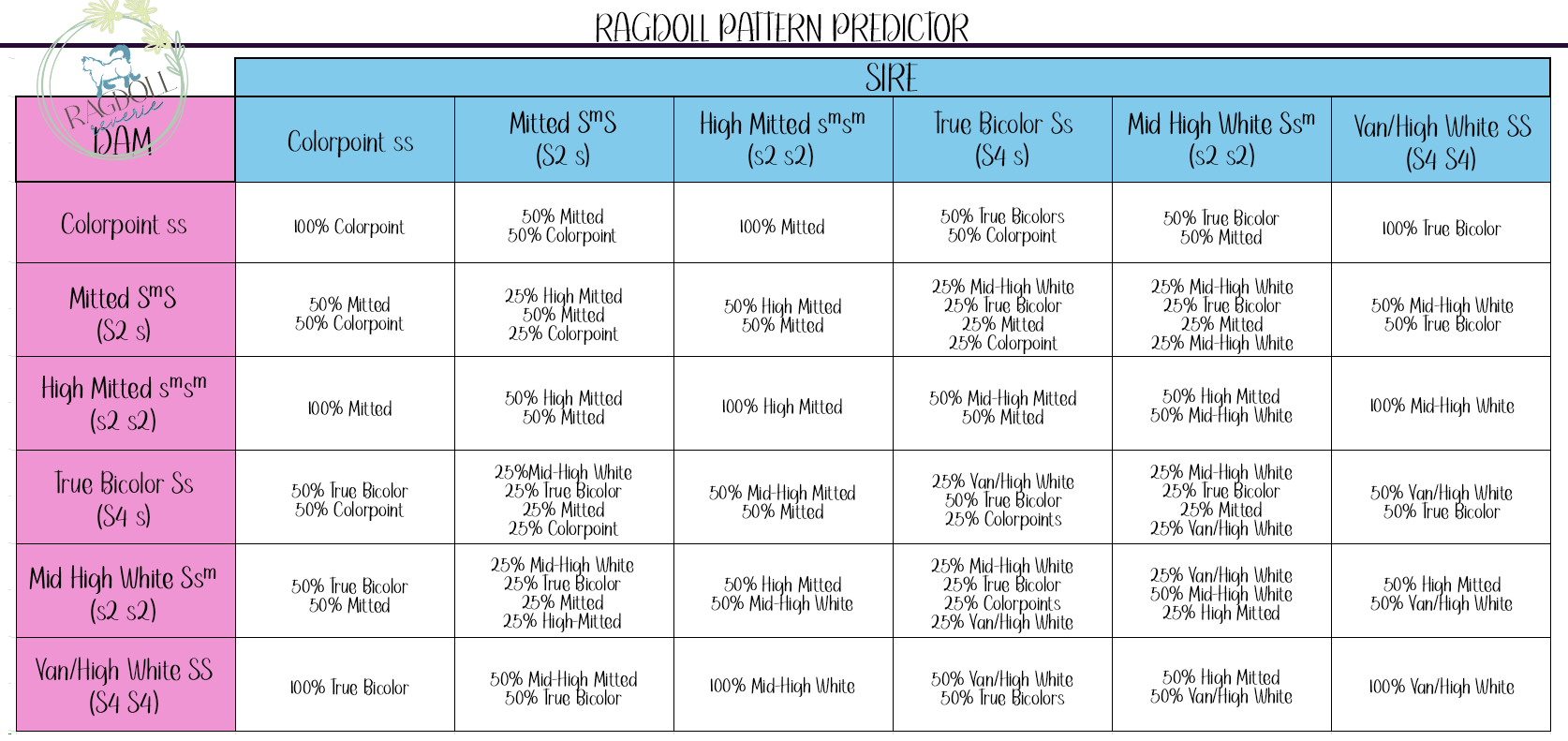Understanding Ragdoll Patterns
Ragdoll cats are known for their stunning patterns, each with unique genetic implications. Breeders focus on patterns like Colorpoint, Bicolor, and Mitted, each determined by specific gene combinations. Understanding these patterns helps breeders predict the appearance of future litters, enhancing the chances of achieving desired traits. The genetic makeup of Ragdolls is complex, involving various combinations that can result in a wide range of beautiful and distinctive patterns.

RAGDOLL PATTERNS
Colorpoint | ss
Bicolor | Ss
Milted | Sᵐs
High Milted | Sᵐsᵐ
Mid High White | SSᵐ
High White | SS
There are many combination possibilities
Colorpoint to Bicolor = ½ Colorpoint, ½ Bicolor.
Colorpoint to Mitted = ½ Colorpoint, ½ Bicolor
Bicolor to Bicolor = ½ Bicolor, ¼ Colorpoint, ¼ High White Bicolor
Bicolor to Mitted = ¼ Colorpoint, ¼ Mitted, ¼ Bicolor, ¼ Mid-White Bicolor
Mitted to Mitted = ½ Mitted, ¼ Colorpoint, ¼ Bicolor
See the chart below for more combinations
Ragdoll Pattern Varieties
Colorpoint
Colorpoint Ragdolls feature a striking contrast between their body color and darker extremities, including the ears, face, paws, and tail.
Mitted
Mitted Ragdolls look like colorpoints in the face, but are characterized by their white mittens on the paws and a white chin, adding a touch of elegance to their appearance.
True Bicolor
True Bicolor Ragdolls display a charming mix of white and color, often with a distinctive inverted ‘V’ on the face and white legs. A True Bicolor receives one Colorpoint gene from one parent and one Bicolor gene from the other parent.
Bicolor Variants
Though they look like bicolors, the high white and mid high white, along with the high mitted are not true bi colours, but they look so similar that the untrained eye will not be able to tell. See more below when we learn about the mating between cats to produce the variations.
Blaze
Some ragdolls have a blaze on their nose/forehead. This is a small patch of white in the shape of a spot, strip, hourglass, star or diamond.
Lynx
Also, called “tabby,” lynx ragdolls are those that have an overlay of stripes covering their fur. They also have a prominent M-shaped tabby pattern on their foreheads, their limbs and tails may have paler stripes and they also have white eyeliner. Colorpoint, bicolor, and mitted can be lynx.
Colorpoint
Colorpoint Ragdolls feature a striking contrast between their body color and darker extremities, including the ears, face, paws, and tail.
Mitted
Mitted Ragdolls look like colorpoints in the face, but are characterized by their white mittens on the paws and a white chin, adding a touch of elegance to their appearance.
True Bicolor
True Bicolor Ragdolls display a charming mix of white and color, often with a distinctive inverted ‘V’ on the face and white legs. A True Bicolor receives one Colorpoint gene from one parent and one Bicolor gene from the other parent.
Bicolor Variants
Though they look like bicolors, the high white and mid high white, along with the high mitted are not true bi colours, but they look so similar that the untrained eye will not be able to tell. See more below when we learn about the mating between cats to produce the variations.
Blaze
Some ragdolls have a blaze on their nose/forehead. This is a small patch of white in the shape of a spot, strip, hourglass, star or diamond.
Lynx
Also, called “tabby,” lynx ragdolls are those that have an overlay of stripes covering their fur. They also have a prominent M-shaped tabby pattern on their foreheads, their limbs and tails may have paler stripes and they also have white eyeliner. Colorpoint, bicolor, and mitted can be lynx.


